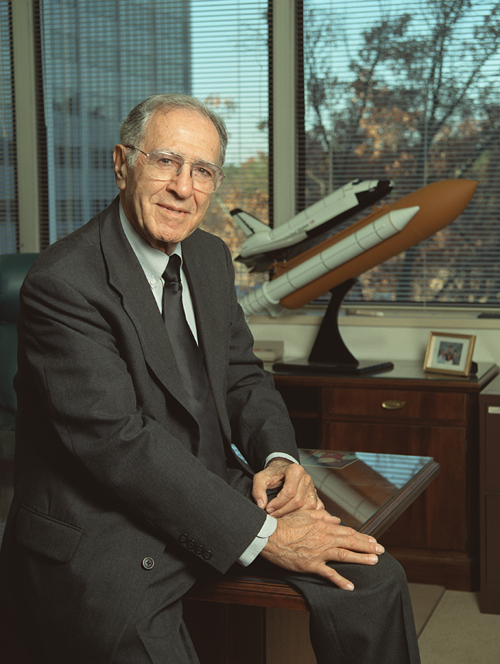By Christian Zazzali
The client was taking a huge risk opening a new store in Washington, D.C. One of the most successful retail mail order businesses in the U.S. had contracted with my company to build the first flagship store outside of New England. It was risky — not only because of the construction of a store, but due to the massive amount of merchandise being moved and the grand-scale relocation of employees.
The client had a handful of outlet stores around the country in malls, but this new store was going to be something entirely different, with unusual features like a waterfall, a trout pond and a “heavy weather” room to verify the seam stitching on all Gore Tex products. And these were only the cosmetic considerations. The more expensive and time consuming work involved reengineering the space structurally, environmentally and more importantly for fire safety. My client was into this thing for millions.
I was managing the construction project, and I thought my biggest challenge was simply finishing the work in time for start of the holiday shopping season. The store opened three weeks before Thanksgiving. Everything looked great. Business picked up steadily as the serious spending season approached. Then, two days before Thanksgiving, disaster struck.
The fire protection system was designed to prevent smoke and fire from reaching the merchandise. If a fire alarm went off anywhere in the building, the system went into a massive pressurization mode. Dampers would open and the system would pump in hundreds of cubic feet of air from outside into the store, pressurizing every square foot, preventing fire or smoke from spreading into the store. That night an unknown event tripped the alarm — and it sounded for six hours. The air conditioning system was still operational as the outside air temperatures had been warm all month. That night, however, temperatures plummeted to 20 degrees. With an alarm sounding in a building complex that covers many millions of square feet, no one paid attention to the cold air flowing into the space. Pipes froze and burst. Hundreds of gallons of water came down through the drywall, soaking merchandise, the carpet and the hardwood racks. This state of the art system, which had been designed to protect, was now responsible for unthinkable damage.
The CEO himself came down from New England. Not looking yet to blame anyone — yet! — all he wanted to know was one thing: what was going to be done to get the store open for the day after Thanksgiving?
I told him this: “Mr. CEO, we are going to fix this. We are going to make this right, and we will worry about how it happened later. If it turns out it was something we did, don’t worry about it, we will fix it all the way to the end. If it turns out it was something somebody else did, then we will work with you and figure out what went wrong and make it right.” First order of business, help the client survive the shock. Done. That was enough for then.
Before the roof came down
The odds of what happened were remote, said the project engineer. Three things had to happen simultaneously. The air conditioning system was not drained yet, it was really cold out, and the fire alarm went off for a long time. No alarm, no problem. System drained, no problem. Just cold outside, not a problem. But the three of them together, that’s a big problem.
Even if the chances were small, there was still a chance, and that’s exactly what I had said months earlier when we hashed out the engineer’s plans in a conference call. If the engineer says the system is fine and the client is inclined to believe the engineer, all I can do is go on record with my professional opinion. The client was using an engineer from Seattle who, I felt, did not understand what an East Coast transitional climate is like. What that means is we can have freezing cold days in September and scorching hot days in October. As the project manager for the general contractor, I went on record as saying, “We feel the system is not the best one for this area. There is a potential for a disaster to occur.”
Some people will say I should have been more forceful in stating my position. Should I sit in a conference and tell the engineer that something he designed stinks? The client had used this engineer on other projects. We, the general contractor, had no relationship with this client, or with the engineer. I may have had more control over what happened on the project than anyone else — but, ironically, I was lowest on the food chain.
Thanksgiving Day…and counting
Nobody on our team said anything about “we told you so.” We didn’t even consider bringing it up. We knew that taking the high road at that point would serve us well in the weeks to come when we sat down to discuss what happened, but for now our next order of business was to get to work.
We immediately restored one of the three HVAC systems so we could at least have some heat. Once the heat was working we could start drying things out.We mobilized all available manpower, including project managers from other projects and at one point we had a Vice President operating a wet/dry vacuum. There were some 100 people doing whatever they could. The day before Thanksgiving we were cutting out drywall, as fast as we could, everywhere we could. We brought in 400 sheets of dry wall, taped it all up, kept going, and had the painters working right behind. All that was just to make it look good for the day after Thanksgiving, because it all had to come down again. Eventually, we had to go in there and get the duct work out. The ducts were wet and a bacterial fungus was going to start growing. The only way we could change the duct work was to tear the ceilings back out.
It came down to the wire, but when we were done it looked presentable. None of the customers knew what happened. The client was ecstatic. And guess what? He exceeded sales goals on the order of 200%. Lines at every register. He just could not believe how busy the store was.
My company could have come out of this thing looking bad. Instead the client loves us.We continue to do work with him, and he’s said to us, “That HVAC design stunk. You were right. Next time, please tell us what we need.”
The engineer, still to this day, feels that somehow he was not responsible. He recognizes that he could have been mistaken, but he stands by his decision that it was a good system, it was designed for the area, and what happened was a one-in-a-million chance. It happened, but so do asteroids fall out of the sky. I just privately rolled my eyes.
You could be the among greatest project managers in world, but if you have an attitude and you give the client heartburn, unnecessary heartburn, you’re not going to do more work with him. If you have a disaster like this one, and you manage to make everybody feel good and believe that you are going to take care of them, then everybody looks back on it and says, “You know what, this is a good project team; we work well together, so let’s do another one.”
Lessons
- Emotional intelligence is critical for effective project leadership, especially during a crisis.
- A crisis demands immediate attention. Set aside blame, and get down to work.Worrying about accountability at this point is a counterproductive distraction. Remember, people are recognized for how they perform in a crisis.
- Improvisation and responsiveness are critical for meeting a blitz schedule.
Question
Recall two crisis situations. In one your leader panicked, while in the other one he/she remained calm. Do you remember how their reaction impacted the team’s effectiveness?
Search by lesson to find more on:
- Leadership









